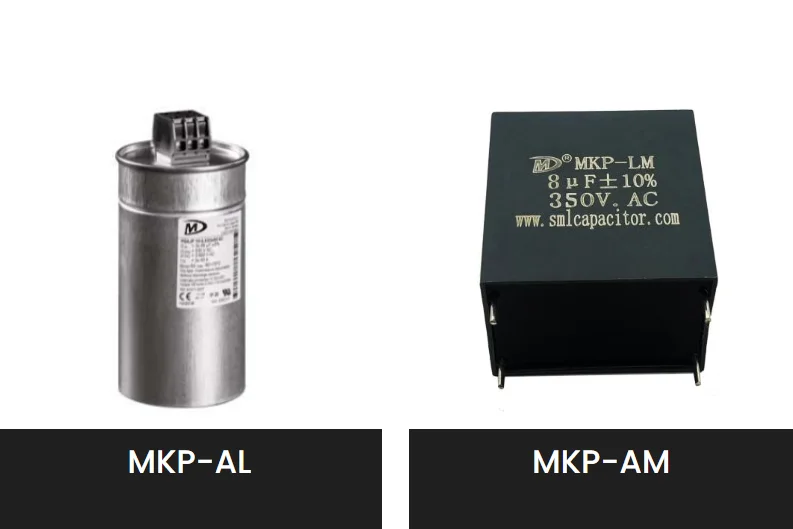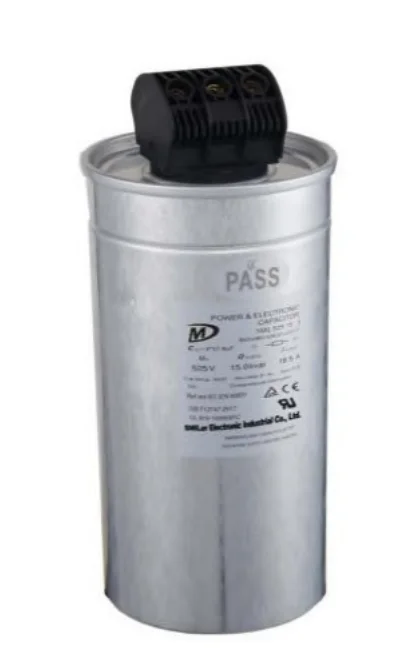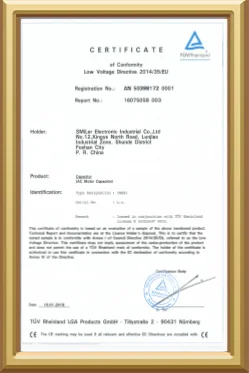Capacitor filters have a function in electronic circuits by helping regulate and stabilize frequency levels effectively. They are essential components intended to cut out unwanted noise and provide voltage stability for enhanced circuit performance. From the power supply to renewable energy sources, such as wind and sun power inverters, capacitor filters enhance efficiency and reliability in electronic equipment. By reducing fluctuations and minimizing ripple currents, they provide stable operating conditions constantly.
DC link circuits usually use conventional electrolytic capacitors' capacitor filters because of its improved characteristics such as low Equivalent Series Resistance (ESR), high ripple current handling capability and self healing properties that make them suitable for long term and durable applications like electric vehicles hybrid, electric vehicles welders and elevator systems and motor drivers.
The performance of a capacitor filter is heavily influenced by frequency. The greater the frequency, the more efficient the capacitor is at smoothing out voltage variations because it charges and discharges quicker, providing better filtering. The capacitor's impedance does decrease with higher frequency, however, which can cause it to bypass higher frequency noise more efficiently. However, with decreasing frequencies, the capacitor would not discharge or charge as rapidly, thus decreasing its effectiveness in filtering out unwanted ripples. Due to this reason, choosing the capacitor with proper frequency characteristics is very important for the best performance in applications like power supplies or signal processing where stable voltage or signal is crucial. The capacitance value and the ESR (Equivalent Series Resistance) are also critical in deciding performance at different frequencies.
 The capacity of a filter to handle frequencies effectively is influenced by its capacitance value. A higher capacitance enables the filter to store additional charge and enhance its capability to stabilize voltage changes at lower frequencies; whereas lower capacitance values are ideal, for high frequency tasks that involve quick charge and discharge cycles.
The capacity of a filter to handle frequencies effectively is influenced by its capacitance value. A higher capacitance enables the filter to store additional charge and enhance its capability to stabilize voltage changes at lower frequencies; whereas lower capacitance values are ideal, for high frequency tasks that involve quick charge and discharge cycles.
In scenarios like AC filtering setups that require processing high frequency harmonics capacitors with customized capacitance values are essential for achieving peak performance. SMILER’s AC Filter Capacitors leverage metallized polypropylene film for their construction and boast heat dissipation capabilities. Despite being lightweight in design these capacitors are sturdy and reliable in managing overvoltage and overcurrent instances adeptly.
 Selecting the capacitance value is a matter of considering parameters, including the range of operation in frequency and the voltage needed as well as the tolerance of the capacitance to ripple currents. From the formula C = I / (2π * f * V), engineers can determine the capacitance value in terms of current frequency and voltage. This formula assists engineers in creating circuits that meet performance goals while maintaining efficiency and reliability.
Selecting the capacitance value is a matter of considering parameters, including the range of operation in frequency and the voltage needed as well as the tolerance of the capacitance to ripple currents. From the formula C = I / (2π * f * V), engineers can determine the capacitance value in terms of current frequency and voltage. This formula assists engineers in creating circuits that meet performance goals while maintaining efficiency and reliability.
SMILER provides options for capacitor filters designed to meet individual customer requirements effectively. Our DC Link MKP-L capacitors stand out for their versatility in voltage and high capacity settings. The key features such as resin filling for insulation resistance (greater than 10,000 seconds at 20°C) and extended operational life (up to 50,000 hours at rated voltage), render these capacitors highly reliable for use in any application.
The performance of a capacitor filter in a circuit is closely linked to the frequency of the signals it deals with. Essentially a capacitor filter works by blocking some frequencies while letting others through this ability is influenced by the impedance of the capacitor. Impedance, which decreases as frequency increases is crucial in determining how well a capacitor filter can suppress noise and maintain voltage levels at higher frequencies.
In situations where strong signals are prevalent, like in renewable energy setups or variable frequency drive systems, this quality proves to be quite beneficial. For example, wind turbines and solar power converters work under changing conditions with frequencies. The capacity of capacitor filters to adjust and uphold effectiveness within these variations is crucial for ensuring operation. SMILER’s capacitors shine in cases, thanks to their great ability to handle ripple currents and their low Equivalent Series Resistance (ESR). These features allow them to function dependably in challenging circumstances.
On the other hand, when the frequency is lower the higher impedance could hinder the filter efficiency. This means that choosing and designing capacitor filters requires precision to match the circuit's operational needs. Engineers need to take into account both the frequency spectrum and the expected filtering effectiveness when selecting capacitors for their uses.
Designers face hurdles when aiming to strike a balance between capacitance and frequency in crafting effective electronic circuits. Optimal performance at frequencies is achievable with greater capacitance as it allows for enhanced charge storage and voltage stabilization. Yet this advantage is counterbalanced by drawbacks, like physical dimensions and potential constraints in scenarios demanding swift charge-discharge sequences at high frequencies.
Alternatively, in high-frequency settings capacitors are created with capacitance for faster responses, this is beneficial for areas, like AC filtering and handling harmonic signals, which require precise high-frequency signal control purposes. SMILER’s AC filter capacitors are made specifically for this, using metalized polypropylene film for lightweight build and strong resistance to voltage spikes and excess current.
 One more difficulty involves handling impacts, resulting from high frequency performance increases the heat production inside the capacitor due to dielectric losses and ripple currents rises as well. Insufficient heat dispersal methods may result in decreased efficiency or eventual breakdown. SMILER tackles this problem by utilizing designs that include elements, such as oil filling or resin potting to enhance thermal control.
One more difficulty involves handling impacts, resulting from high frequency performance increases the heat production inside the capacitor due to dielectric losses and ripple currents rises as well. Insufficient heat dispersal methods may result in decreased efficiency or eventual breakdown. SMILER tackles this problem by utilizing designs that include elements, such as oil filling or resin potting to enhance thermal control.
In addition, ensuring that the devices last with consistent performance under different conditions demands careful focus on the quality of materials and production methods used in manufacturing processes. For example, SMILER makes certain that its capacitors adhere to guidelines like GB/T 17702, ensuring their longevity and reliability even in tough situations.
SMILER’s capacitor filters are intricately designed to deliver performance and dependability in high-frequency settings. These capacitors boast the use of polypropylene film for superior quality and endurance. Their low Equivalent Series Resistance (ESR) and self-healing abilities further boost their effectiveness in addressing frequency-related obstacles. The features of SMILER’s capacitors are well suited for uses, like DC link circuits in wind and solar power systems. Their stable voltage output and noise reduction greatly enhance the efficiency of devices. Furthermore, the capacitor’s effectiveness across a voltage range (600 Vdc to 4,000 Vdc) and capacitance values (24μ F to 5,600μ F), make them adaptable solutions for different industries.
Opt for SMILER for all your capacitor filter requirements. Witness the impact of advanced technology and exceptional knowledge in effectively addressing frequency issues.
A: That current is proportional to the capacitance and the time rate of change of the voltage. Capacitors are sometimes used with DC power sources to remove high frequency noise - they don't conduct the low frequency DC because they are open.
A: They can block out low-frequency or DC signal-components while allowing higher frequencies to pass right through. They're like a bouncer at a very exclusive club for high frequencies only. Filtering signals can be useful in all sorts of signal processing applications.
A: The two basic properties of a capacitor are that it can store electric charges and that it can conduct higher-frequency AC currents with more ease.
A: Capacitors are used in the filtering circuits to prevent some frequencies and allow others. This is achieved by placing a capacitor either in series or parallel with the load resistor. When a signal is applied to the circuit, the capacitor charges and releases, creating a voltage drop across the resistor.